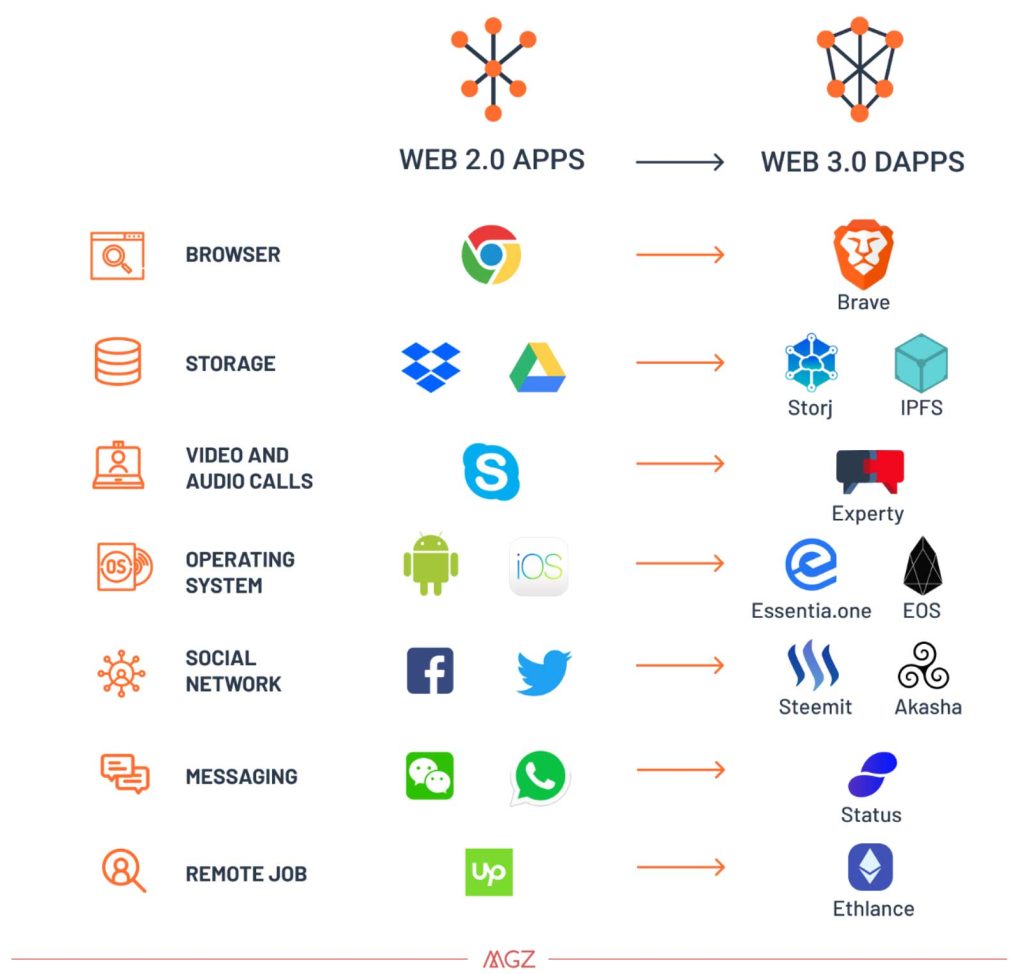The rise of Web 3.0 has ushered in a new era of innovation, where decentralized technologies like blockchain, cryptocurrency, and smart contracts are transforming industries and business models. If you’re looking to start a Web 3.0 Business, you’re venturing into a landscape filled with opportunities and challenges. In this comprehensive guide, we’ll walk you through the essential steps and considerations to launch your Web3 venture successfully. Learn what is Web3.
Understanding the Web 3.0 Landscape
Before diving into the specifics of starting a Web 3.0 Business, it’s crucial to have a clear understanding of the Web 3 landscape. Web3 represents a shift from centralized, siloed systems to a more open, decentralized, and user-centric internet. Key components of Web 3.0 include:
- Blockchain Technology: The foundation of Web 3.0, blockchain is a decentralized ledger that records transactions across a network of computers. It offers transparency, security, and immutability.
- Cryptocurrencies: Digital currencies like Bitcoin and Ethereum are integral to Web3. They enable peer-to-peer transactions and serve as incentives within decentralized ecosystems.
- Decentralized Applications (dApps): These are applications built on blockchain platforms. They often employ smart contracts for automated, trustless execution of agreements.
- Smart Contracts: Self-executing contracts with predefined rules, smart contracts automate processes without intermediaries.
- NFTs (Non-Fungible Tokens): These unique digital assets represent ownership of real-world or digital items and have gained popularity in art, gaming, and collectibles.
- DeFi (Decentralized Finance): DeFi protocols offer financial services like lending, borrowing, and trading without traditional intermediaries.
- DAOs (Decentralized Autonomous Organizations): DAOs are organizations governed by code and community consensus rather than centralized authorities.
Step 1: Define Your Web 3.0 Business Idea
Starting a Web 3.0 Business begins with a clear and compelling idea. Identify a problem or opportunity within the Web 3.0 landscape that your business can address. Consider the following:
- Market Research: Study the Web 3.0 ecosystem to identify gaps, pain points, or emerging trends.
- Unique Value Proposition: Define what sets your business apart. How does it offer value to users or the broader Web 3.0 community?
- Target Audience: Determine your ideal users or customers within the Web 3.0 space.
- Revenue Model: Consider how your business will generate income. This could involve fees, subscriptions, tokenomics, or other monetization strategies.
Step 2: Develop a Web3 Business Plan
A well-structured business plan is essential for guiding your Web 3.0 venture. Include the following elements:
- Executive Summary: A concise overview of your business, its mission, and its goals.
- Market Analysis: Detailed research on the Web 3.0 market, including competitors, trends, and opportunities.
- Product/Service Description: Explain what your business offers, how it works, and its unique features.
- Marketing Strategy: Outline how you’ll reach your target audience and promote your Web3 product or service.
- Team: Highlight the skills and expertise of your team members.
- Financial Projections: Project revenue, expenses, and cash flow to estimate your financial viability.
- Funding Needs: Determine how much capital you need to start and scale your Web3 business.
Step 3: Choose a Web3 Business Model
Web3 businesses can adopt various models depending on their offerings and goals:
- Decentralized Application (dApp): Create a blockchain-based application that leverages smart contracts for specific functions, such as DeFi, NFTs, or governance.
- Token-Based Economy: Issue your cryptocurrency or token to facilitate transactions, incentives, or governance within your ecosystem.
- DeFi Protocol: Develop a decentralized financial protocol that provides lending, borrowing, or liquidity services.
- NFT Marketplace: Create a platform for trading and minting NFTs, catering to artists, collectors, and creators.
- Blockchain Consulting: Offer advisory services to businesses seeking to implement Web3 solutions.
Step 4: Build the Technical Infrastructure
The technical aspect of launching a Web 3.0 Business is crucial. You may need to:
- Choose a Blockchain Platform: Depending on your business model, select a suitable blockchain platform (e.g., Ethereum, Binance Smart Chain, or Polkadot).
- Develop Smart Contracts: If your business relies on automation, work with blockchain developers to create smart contracts.
- Integrate Wallets: Enable users to interact with your Web3 application by integrating compatible cryptocurrency wallets.
- Security Measures: Implement robust security measures to protect user data, assets, and transactions.
Step 5: Legal and Regulatory Compliance
Navigating the legal and regulatory landscape is vital for a Web 3.0 Business:
- Entity Formation: Determine the appropriate legal structure for your business (e.g., LLC, corporation, or DAO).
- Intellectual Property: Address intellectual property rights, especially if you’re creating NFTs or unique digital assets.
- Compliance: Ensure you’re compliant with relevant financial regulations if your business involves cryptocurrencies or token sales.
- Terms of Service and Privacy Policy: Draft clear terms of service and privacy policies to inform users about their rights and responsibilities.
Step 6: Funding Your Web3 Business
Securing adequate funding is a critical step in starting a Web3 business:
- Bootstrapping: Use personal savings or revenue generated by your business to fund its initial stages.
- Angel Investors: Seek early-stage investors who believe in your Web3 business idea.
- Venture Capital: Approach venture capital firms specializing in Web3 or blockchain investments.
- Token Sales: Consider conducting a token sale (e.g., ICO or STO) if it aligns with your business model.
- Grants: Explore grants and funding opportunities offered by blockchain foundations and organizations.
Step 7: Build a Web3 Community
A thriving Web 3.0 community can be a significant asset to your business:
- Community Engagement: Engage with your target audience on social media, forums, and Web3 platforms.
- Transparency: Be open and transparent about your business’s progress, developments, and challenges.
- Governance: If applicable, involve your community in governance decisions through DAOs or voting mechanisms.
- Rewards: Consider reward mechanisms, such as token incentives, to encourage community participation and loyalty.
Step 8: Launch and Iterate
Once you’ve developed your Web 3.0 product or service, it’s time to launch:
- Beta Testing: Invite early users to test your product and provide feedback.
- Iterate: Continuously improve your offering based on user feedback and market trends.
- Marketing and Promotion: Execute your marketing strategy to reach a broader audience.
Step 9: Monitor, Adapt, and Scale
After your Web 3.0 Business is up and running, continue to:
- Monitor Performance: Track key metrics, user engagement, and revenue to assess your business’s performance.
- Adapt to Market Changes: Be adaptable and responsive to changes in the Web3 landscape and user preferences.
- Scale: As your business grows, consider expansion, partnerships, or additional services.
Step 10: Compliance and Security
Ongoing compliance and security measures are essential for a successful Web3 business:
- Regulatory Compliance: Stay up-to-date with evolving regulations and adapt
your business practices accordingly.
- Security Audits: Conduct regular security audits to protect user data and assets.
- User Education: Educate your users about best practices for securing their Web3 assets.

Conclusion
Starting a Web 3.0 Business presents both exciting opportunities and unique challenges. Embracing decentralized technologies like blockchain, cryptocurrencies, and smart contracts allows you to create innovative solutions and participate in the transformation of the digital landscape.
With careful planning, a well-defined business idea, a solid technical foundation, and a commitment to compliance and security, you can embark on your Web3 entrepreneurial journey. Remember that the Web3 space is dynamic and rapidly evolving, so staying informed and adaptable is key to success in this decentralized frontier.

